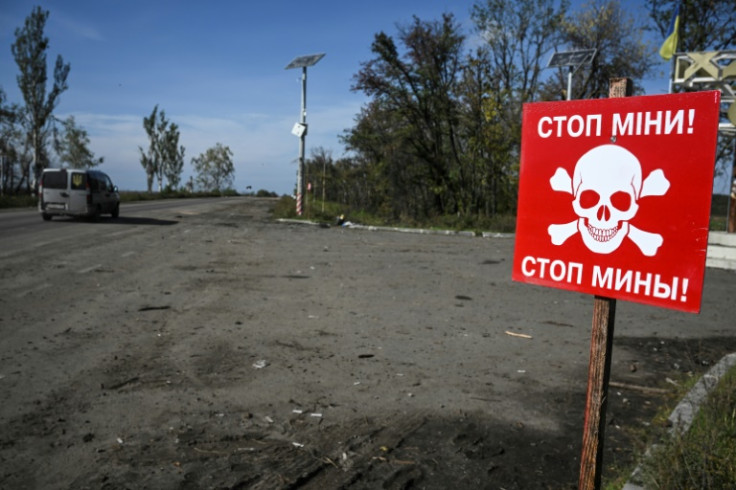New Use Of Landmines Drives Up Casualties: Monitor

New use of landmines, including extensive deployment by Russia in Ukraine, drove a global rise of new casualties from the weapons in 2022, a monitor said on Tuesday.
According to the Landmine Monitor, 4,710 people were wounded or killed by landmines and explosive remnants of war (ERW) across 49 states and two other areas last year.
Civilians -- half of them children -- accounted for 85 percent of those casualties, it said.
That official number of overall casualties was slightly lower than a year earlier, when 5,544 such casualties were recorded.
But Mark Hiznay, the editor of the annual report, told reporters in Geneva that the drop last year was linked to "a massive gap in recording for Afghanistan during 2022".
And co-author Loren Persi noted a dramatic increase in the number of casualties linked exclusively to landmines -- explosive devices intentionally placed above or underground that kill and wound people during and long after conflicts.
"The number of casualties recorded as specifically caused by antipersonnel landmines increased ... by just over 50 percent, to 628 in 2022 from 414 antipersonnel mine casualties in 2021," he told AFP.
The report determined that the highest number of casualties recorded last year from both landmines and ERW was Syria, at 834.
But it was perhaps the surging casualty numbers in Ukraine that was the most shocking.
Amid Russia's full-scale invasion, which began in February last year, the number of civilians wounded or killed by landmines and explosive remnants of war in Ukraine soared more than 10-fold in 2022 to 608, up from 58 in 2021.
Yemen and Myanmar both recorded more than 500 casualties in 2022, the report said.
The Landmine Monitor report was released ahead of an annual meeting of state parties of the Mine Ban Treaty, which was adopted in 1997.
That treaty, which currently counts 164 state parties, prohibits the use, stockpiling, production and transfer of antipersonnel mines, and requires that assistance be provided to victims, as well as mine clearance and stockpile destruction.
"The Mine Ban Treaty must be the cornerstone of all efforts to rid the world of antipersonnel mines," the head of the International Campaign to Ban Landmines, Tamar Gabelnick, said in a statement.
"The only way communities will be truly safe from the scourge of these weapons is when all states have joined and are fully respecting the treaty."
The report found that 60 countries and other territories remain contaminated by landmines, including 33 state parties that have an obligation to actively pursue mine clearance.
It cautioned that new use of the prohibited weapon represented one of the greatest challenges to the long-held norm against landmines.
Myanmar and Russia, which are not state parties to the treaty, both deployed fresh landmines in 2022.
Tuesday's report highlighted that Russia's extensive use of landmines in Ukraine had resulted in an "unprecedented situation in which a country that is not party to the Mine Ban Treaty is using the weapon on the territory of a State Party".
It highlighted that Ukrainian authorities were also "investigating the circumstances of its forces using antipersonnel mines".
Hiznay said there was "credible evidence that the Ukrainian forces used antipersonnel mines in violation of the treaty in and around the city of Izyum during 2022, when the city was under Russian control".
Katrin Atkins, a senior researcher with the team, told reporters that Ukraine had requested a 10-year extension for its mine clearance deadline.
She said the request would be considered during a meeting of member states later this month.
© Copyright AFP 2025. All rights reserved.





















